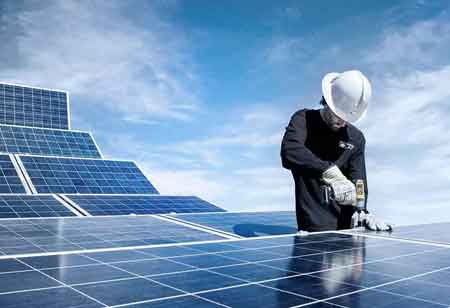Thank you for Subscribing to Energy Business Review Weekly Brief
Identifying Profitable Clean Energy Technologies
Clean energy technologies have become increasingly vital in the global quest for sustainable energy solutions.

By
Energy Business Review | Friday, June 07, 2024
Stay ahead of the industry with exclusive feature stories on the top companies, expert insights and the latest news delivered straight to your inbox. Subscribe today.
Identifying profitable clean energy technologies like solar, wind, energy storage, biomass, and hydroelectric power requires careful financial viability analysis, environmental benefits, and market dynamics.
FREMONT, CA: Clean energy technologies have become increasingly vital in the global quest for sustainable energy solutions. With growing concerns over climate change and environmental degradation, investors are keen to identify profitable avenues within the clean energy sector. Various clean energy technologies show promise for profitability, offering insights into their potential financial returns and environmental benefits.
Solar Energy
Solar energy is a prominent and rapidly expanding clean energy technology. Harnessing the power of sunlight through photovoltaic (PV) panels, solar energy systems convert sunlight into electricity with minimal environmental impact. The solar industry has witnessed remarkable growth in recent years, driven by declining costs of solar panels and favourable government policies promoting renewable energy adoption.
Solar energy yields attractive returns, particularly in regions with abundant sunlight and supportive regulatory frameworks. Solar photovoltaic installations offer predictable cash flows through power purchase agreements (PPAs) or net metering arrangements, providing stable revenue streams for investors.
Solar energy significantly reduces greenhouse gas emissions compared to fossil fuel-based electricity generation. Solar installations contribute to cleaner air and mitigate climate change impacts by displacing coal and natural gas-fired power plants.
Wind Energy
Wind energy represents clean energy technology with substantial growth potential. Wind turbines harness the kinetic energy of wind to generate electricity, offering a renewable alternative to traditional fossil fuel power generation. The global wind energy market has experienced rapid expansion, driven by advancements in turbine technology and supportive government incentives.
Wind farms generate attractive returns for investors, particularly in areas with consistent wind patterns and favourable wind resources. Long-term power purchase agreements (PPAs) with utilities or corporate buyers provide revenue certainty, enhancing the financial viability of wind energy projects. Wind energy produces no greenhouse gas emissions or air pollutants during operation. By displacing coal-fired power plants, wind farms contribute to reduced carbon emissions and improved air quality.
Energy Storage
Energy storage technologies are crucial in widely adopting renewable energy sources such as solar and wind. Battery storage systems allow for capturing and storing excess energy generated during high renewable energy production periods, discharged during high demand or low renewable output. The development of cost-effective energy storage solutions has become a focal point for investors and policymakers alike.
It offers a range of revenue streams, including peak shaving, demand response, and ancillary services. The growing demand for grid-scale energy storage solutions and declining battery costs make energy storage investments increasingly attractive financially.
Energy storage facilitates the integration of intermittent renewable energy sources into the grid, enhancing grid stability and reliability. Energy storage systems contribute to lower emissions and a more sustainable energy future by reducing the need for backup fossil fuel-based power plants.
Biomass Energy
Biomass energy utilises organic materials such as agricultural residues, forestry waste, and dedicated energy crops to produce heat, electricity, and biofuels. Biomass is converted into energy through various processes, including combustion, gasification, and anaerobic digestion.
Biomass energy projects are financially viable in specific contexts, particularly regions with abundant biomass resources and supportive policies. Revenue streams include electricity sales, renewable energy credits (RECs), and feedstock sales, although profitability varies depending on feedstock costs and market conditions.
Biomass energy contributes to carbon neutrality when sourced from sustainably managed forests or agricultural residues. However, concerns over land use change, air emissions, and competition with food production highlight the importance of careful biomass sourcing and management practices to minimise environmental impacts.
Hydroelectric Power
Hydroelectric power remains one of the oldest and most widely deployed forms of renewable energy. It utilises the kinetic energy of flowing water to generate electricity. Large-scale hydroelectric dams provide a reliable and dispatchable source of electricity, while small-scale hydro projects offer decentralised energy solutions for remote communities. Revenue streams include electricity sales, capacity payments, and ancillary services, although upfront capital costs and regulatory hurdles can impact project economics.
Hydroelectric power produces minimal greenhouse gas emissions during operation and provides reliable baseload electricity, helping to reduce reliance on fossil fuels. However, large-scale dams disrupt aquatic ecosystems, alter river flow patterns, and displace local communities, necessitating careful environmental assessment and mitigation measures.
Identifying profitable clean energy technologies requires careful consideration of financial viability, environmental benefits, and market dynamics. Solar energy, wind energy, energy storage, biomass energy, and hydroelectric power represent promising investment opportunities within the clean energy sector, offering financial returns and environmental sustainability. By leveraging these technologies effectively, investors contribute to a more sustainable and resilient energy future while capturing lucrative investment opportunities in the transition to clean energy.






